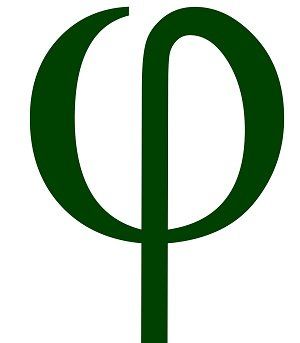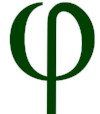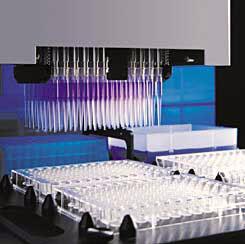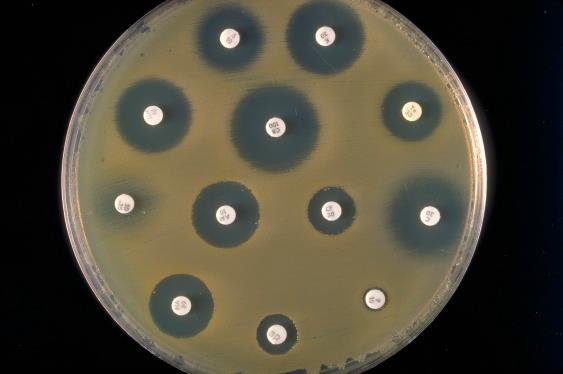TESTING
Screening
Screening can be carried out in test tubes or micro plates in a method known as in vitro screening, or in living organisms, in a method referred to as in vivo screening. Screening identifies extracts with greater or lesser activity against targets and these results can be used to progressively guide the purification of fractions and isolation of compounds towards those which show more activity.
Screening is the process through which active compounds and, therefore, potential drug leads, can be discovered. Screening tests a fraction or compound’s efficacy against a selection of pre-defined targets - e.g. bacteria, enzymes or cancer cells. Screening may take place before, during or after analysis – depending on the approach being used.
As the same compounds are often present in multiple species, they are frequently re-extracted – de-replication draws information from chemical databases of known active compounds - to prevent the same compounds from being repeatedly identified as active.
Assays
Assays are bio-chemical tests which test the target with fractions or isolated compounds in varying concentrations. The aim of assays in drug discovery is to find activity or hits and, if the compound has viability as a potential drug, it becomes a lead.
Assays are bio-chemical tests which test the target with fractions or isolated compounds in varying concentrations. The aim of assays in drug discovery is to find activity or hits and, if the compound has viability as a potential drug, it becomes a lead.
In order to save time, an automated technique called high-throughput screening (HTS) - in which thousands of compounds can be tested against a target simultaneously - is often used to find hits. It is also possible to carry out testing on a single plate of bacteria - where the size of the clear area around a compound or fraction (the zone of inhibition) demonstrates its activity against a bacterial strain.
Assays can also tell us the amount of a substance needed to inhibit or kill a pathogen. This can be measured as the minimum amount needed to prevent pathogen growth - the minimum inhibitory concentration (MIC); the concentration of a drug that is required for 50% inhibition in vitro (IC50) or, the concentration of a drug required to achieve 50% of the maximum possible response (EC50 ). Crucially, IC50 and EC50 values tell us if a drug is active in a concentration suitable for human consumption and, therefore, if it is a suitable lead.
Quality Control
Even after isolation, compounds can deteriorate or change (polymorphism) or become contaminated. A number of techniques can be used at this stage to establish the purity and stability of an isolated lead compound. Quality control measures (QC) prevent impurities and detect contamination and deterioration. Once QC measures have been applied and an Active Pharmaceutical Ingredient (API) has been produced, excipients are added so that the drug can be administered to participants in clinical trials.
Clinical Trials
Once proven effective in the lab, the process of bringing a drug to market involves a lengthy (sometimes >10 years) and costly (> US$1 billion) series of clinical trials:
Phase I trials assess the safety of a drug (several months) Phase I trials determine the effects of the drug on humans including its absorption, distribution metabolism, excretion and toxicity. Phase I trials also look at side effects as dosage levels are increased.
Phase II studies test the efficacy of a drug (several months - 2 years).
Phase II trials usually involve randomized studies in which one group of patients receives the experimental drug, while a second ‘control’ group receives a standard treatment or placebo.
Phase III trials involve randomized and blind testing in 100s to 1,000s of patients. (several years). Phase III trials provide a drug developer with more data about possible adverse reactions.
Phase IV trials involve post marketing surveillance trials (ongoing) - after a drug has been approved for consumer sale. Phase IV trials compare the drug to others already on the market; monitor the drug's long-term effectiveness; patient impact and cost-effectiveness.
Even after isolation, compounds can deteriorate or change (polymorphism) or become contaminated. A number of techniques can be used at this stage to establish the purity and stability of an isolated lead compound. Quality control measures (QC) prevent impurities and detect contamination and deterioration. Once QC measures have been applied and an Active Pharmaceutical Ingredient (API) has been produced, excipients are added so that the drug can be administered to participants in clinical trials.
Clinical Trials
Once proven effective in the lab, the process of bringing a drug to market involves a lengthy (sometimes >10 years) and costly (> US$1 billion) series of clinical trials:
Phase I trials assess the safety of a drug (several months) Phase I trials determine the effects of the drug on humans including its absorption, distribution metabolism, excretion and toxicity. Phase I trials also look at side effects as dosage levels are increased.
Phase II studies test the efficacy of a drug (several months - 2 years).
Phase II trials usually involve randomized studies in which one group of patients receives the experimental drug, while a second ‘control’ group receives a standard treatment or placebo.
Phase III trials involve randomized and blind testing in 100s to 1,000s of patients. (several years). Phase III trials provide a drug developer with more data about possible adverse reactions.
Phase IV trials involve post marketing surveillance trials (ongoing) - after a drug has been approved for consumer sale. Phase IV trials compare the drug to others already on the market; monitor the drug's long-term effectiveness; patient impact and cost-effectiveness.





